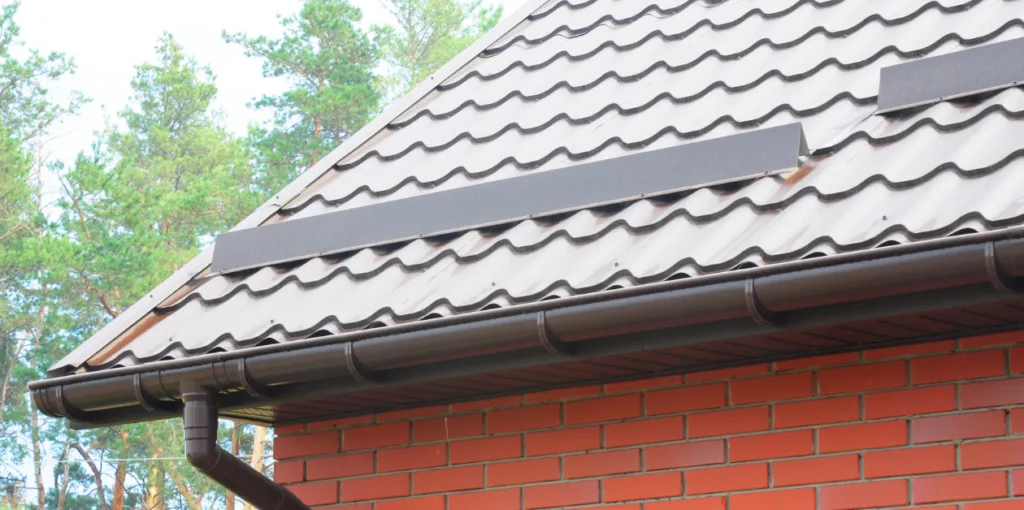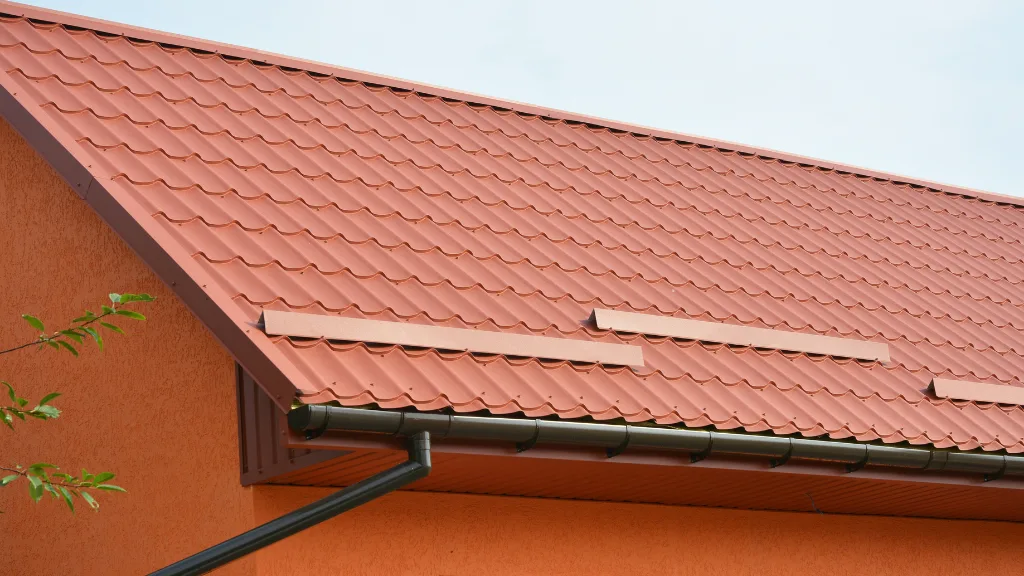
Ice and water shields for your roof are two important components of a roofing system that help protect your home from the elements. But, what do they each do?
This blog post will discuss the difference between the two and how they work together to keep your roof safe. You’ll also learn about underlayment, which is an essential component of any roofing system!
What are Roofing Ice and Water Shields?
The ice and water shield is a self-adhered leak barrier or a roof guard that comes in a sheet with split back release film. The material that is rubberized prevents the leaks into your roofing system from the following:
Water dam – Ice and water shields are designed to help divert the flow of water that falls from your roof away from certain areas. This helps keep it flowing smoothly off your roof, which can prevent damage caused by excess moisture.
Wind driven rain – The reflective underside of the ice and water shield also works as a windbreaker. The material is designed to help prevent rain from traveling across your roof, which can cause leaks through improper flashing or other areas that aren’t sealed properly.
Ice dam – The ice and water shield helps keep the roof edge dry. This prevents ice from building up along your roof, which can lead to leaks through improper flashing or other areas that aren’t sealed properly.
Ice and water shields for the roof are an important part of your roofing system. They help prevent damage caused by common problems like ponding, ice dams, leaks through cracks or holes in the shingles, deterioration due to weather exposure, rust on metal roofs and more!
Both types of protection do similar jobs—prevent moisture from getting into your home through the roof.
The difference is that ice and water shield protects against more than just moisture, whereas underlayment only works to prevent moisture from entering your home.
What Is Underlayment?
Underlayment is a thin sheet of material installed between shingles and plywood or OSB sheathing on a roof deck.
It is an important component of any roofing system because it helps prevent moisture from being absorbed into your sheathing, which can lead to expensive repair bills if not properly maintained. It can also protect against ice dams, which are common during the winter months.
You should consider using underlayment on your roof if you live in an area that gets a lot of snow or rain or experiences high winds. The extra layer will help keep moisture out and prevent damage to your home—which is something we know homeowners don’t want to deal with.
If you’re not sure if your roof is in need of underlayment, give us a call! We can help identify areas that may be susceptible to moisture and recommend the best products for your home’s needs.
Just remember—underlayment can prevent damage later on, but it doesn’t fix any issues resulting from improper installation or damage already done to your roof.
Why Install Ice and Water Shields for Your Roof
The most common element to cause damage to roofs is ice. Frozen precipitation accumulates on rooftops under certain conditions and can have a devastating effect on shingles, roof sheathing, gutters and eaves.
However, there are products available to divert the flow of melting ice away from vulnerable areas thus prolonging the life expectancy of your roof.
Installing ice and water shields is equally important to the installation of asphalt shingles.
The warranty for most asphalt roof tiles does not cover damage caused by ice damming or other forms of weather exposure such as hail, snow, sleet or freezing rain build up on your roof.
The use of ice and water shields will allow you to maintain the beauty of your roof for years to come.
The material typically used for ice and water shields are felt paper, rubber sheeting or synthetic polymer membranes. They work by diverting melt water away from the edge of the roof thus preventing damage caused by ponding water.

Felt Sheets as Ice and Water Shields
Felt is a natural, organic product made from compressed fibers of recycled cotton and synthetic fibers.
Manufacturers add an acrylic or asphalt based top coat to the product to enhance its durability and water resistance. In most cases felt paper is faced with aluminum or a polymer modified bitumen membrane.
Felt paper is typically sold in rolls that have been pre-cut into 12″ wide strips which are fastened directly to the roof deck with nails or staples. The entire length of each strip is coated in a top coat and should be lapped over the bottom strip (no less than 4″).
Rubber Sheeting as Ice and Water Shields
There are several types and styles of rubber sheeting that can be used for ice and water shield applications:
Rubber cardstock – this material comes in rolls and is typically 12″ wide with up to 4′ lapping.
Rolled rubber – this product comes in rolls that are typically 30″ or 36″ wide. The material is normally sold pre-cut into two foot lengths and can be cut to any size needed for your application.
Manufactured rubber products – these materials come in panels which are 12″ wide and are often factory built to specific lengths.
Neoprene – this material is ideal for roof ice and water shield applications because it’s impermeable to air, water, oil, acids and salts. It can be used in floors, roofs or wherever a rubber product is needed.
Neoprene has the added benefit of being highly resistant to breakdown from ultraviolet radiation.
Synthetic Membranes as Ice and Water Shields
Most synthetic membranes are referred to as polymer modified bitumen membranes because they’re made by adding a special blend of polymers during the manufacturing process.
This makes the material more flexible, elastic, stronger and less susceptible to damage due to abrasion, environmental exposure or physical damage.
Most synthetic membranes are sold in rolls that are 12″ wide and are pre-cut to specific lengths. A top coat is added during the manufacturing process so there’s no need for an additional coating on installation.
While most manufacturers recommend using their products with ice and water shields, it’s not always necessary.
Polymer modified bitumen membranes work well without ice and water shield materials because they’re made with an aggressive adhesive to ensure a long lasting bond.
General Guidelines for Installing Ice and Water Shields for Your Roof
When using roof paper or rubber sheeting, always use self-sealing nails or staples to secure the material in place. Try not to puncture the top coat of either material.
If you have a lot of penetrations in your roof ice and water shield, it’s best to use a polymer modified bitumen membrane instead.
When using a rolled rubber product, try not to puncture or tear the material as you work your way along the roof edge.
When working on sloped roofs, always position yourself so you’re walking downhill as this will allow the material to slip under your feet as it’s being installed.
If you have a severely pitched roof or a steep roof pitch with several ridges and valleys, it may be best to use a polymer modified bitumen membrane instead of ice and water shield materials.
A rubber card or sheet product can be difficult to install in these conditions and may result in damage to the membrane.
Sometimes ice and water shield materials don’t always adhere well in colder climates. If you’re working in extremely cold temperatures, use a heat gun or electric heater on the installation area prior to installing your material.
This will help warm up the roof deck and improve adhesion.
How Can Underlayments Protect Your Roof
When you’re building a new house, installing an underlayment for your roof is one of the easiest steps. You can think of it as a step that makes future work easier and safer.
You want to make sure that you are working with some sturdy material though, because there are some materials out there that may not be so good for protecting your roof.
Here are a few examples of the different kinds of underlayments that you can use for your house:
Plywood or Oriented Strand Board (OSB) – Made from thin sheets of wood. The final product is very smooth, so it can be painted easily. They both have about the same characteristics, but the OSB is a little cheaper.
Parachute Roofing – This comes in rolls, but does not have a smooth surface like plywood or OSB. It is made from a rubber-like material that is extremely strong and easy to use. However, it can be more expensive than the other options.
Asphalt – This is probably the most common material used. It’s easy to install, and you can find it at your local hardware store. However, if it gets too hot, it will start to break apart.
Rubber Membrane – These are made from rubber that has been melted into a flat sheet. The sheets are very tough and last a very long time. However, they are also the most expensive option for roofing underlayment.
A roofer can help you decide what kind of underlayment would be best for your new house. It’s important to take into consideration what will work best for your climate and how it will affect the overall look of the roof.
When you do decide to use underlayment, don’t forget to go for a high quality material so that it will last as long as possible.


